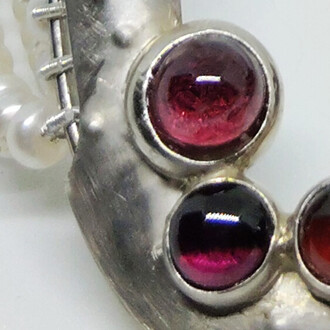From November 23, 2024 to February 23, 2025, the Gallerie Nazionali di Arte Antica will host a historic loan from a private collection: the Portrait of Monsignor Maffeo Barberini, attributed by leading scholars to Caravaggio, will be on public display for the first time in the Sala Paesaggi of Palazzo Barberini.
The portrait shows Maffeo Barberini seated in a wooden armchair with his body turned slightly to the left. A beam of light shines powerfully down on him in a very bare and plain room. The monsignor, in his thirties, wears a cap and a sleeveless cassock in shades of green over a pleated white robe. His left arm rests on the arm of the chair and he is clutching a folded letter in his hand, while in the foreground light shines on a roll of documents resting against the chair.
The impatient look on his face, his half-open mouth and the rather sudden gesture he makes with his right hand cutting through the space suggest he is a lively character busy giving an order to someone out of frame. The elegant chromatic experimentation, the way the figure is set diagonally in relation to the background, the contrasts between light and dark, the shape of the rounded hands, the luminosity of the skin and the way the eyes are painted with a dab of white lead to add intensity to the subject’s gaze, are all distinctive traits of Merisi's characteristic style as critics have pointed out.
With just a few brushstrokes, Caravaggio paints a Portrait in motion and reveals the mood and personality of the subject, an intellectual from the highest social circles, monumental in his presence, yet quite free from rhetoric.
First made known by Roberto Longhi in his article Il vero ‘Maffeo Barberini’ del Caravaggio published in the journal Paragone in 1963, the Portrait was presented as a real key to understanding Caravaggio as a portrait artist, filling a notable gap in the Roman period of the great master's work, as his portraits are extremely rare and have almost all been either lost or destroyed.
According to Longhi, the work, which came to light in Rome without any accompanying documentation, was in the Barberini family collection for centuries before ending up in a private collection, probably when the estate was dispersed in the 1930s.
The recent publishing of the correspondence between Roberto Longhi and Giuliano Briganti (2021) has revealed that the discovery and attribution of the Portrait to Caravaggio was initially made by Briganti, who gave Longhi the right to publish it. In a letter dated July 2, 1963, the latter confirmed what had happened, offering Briganti the chance to publish the work. In any case, Longhi published about the work in September 1963 without mentioning Briganti but praising Alfredo De Sanctis's restoration work.
Federico Zeri also acknowledged the attribution to Caravaggio. In the scholar's Photo Library kept at the University of Bologna, a photograph of the painting in the Caravaggio file has Zeri’s signature on the back, indicating it came from the Roman art dealer and connoisseur Sestieri, the former curator of the Barberini Gallery.
Since it re-emerged in 1963, the work has been unanimously acknowledged by critics (most recently: Cappelletti, Zuccari, Terzaghi, Papi, Vodret, Christiansen and Schütze) due to its distinctive stylistic traits and the exceptional quality of the portrait; Mia Cinotti, author of one of the most comprehensive Caravaggesque monographs from 1983, had already included it in the Merisi catalogue after the owner allowed him to make an in depth examination of the work.
Thomas Clement Salomon, Director of Gallerie Nazionali di Arte Antica, points out that “This is the painting by Caravaggio that everyone wanted to see. it seemed impossible. We are deeply proud that the Gallerie Nazionali di Arte Antica have succeeded in this ambitious challenge: for the first time ever this masterpiece can be admired by everyone at Palazzo Barberini”.
The exceptional nature of this loan means people have a unique opportunity to admire a work that has never previously been exhibited to the public and has always been part of the private collection it still belongs to. This exhibition is an unprecedented event of extraordinary interest to both scholars/experts and the public.














